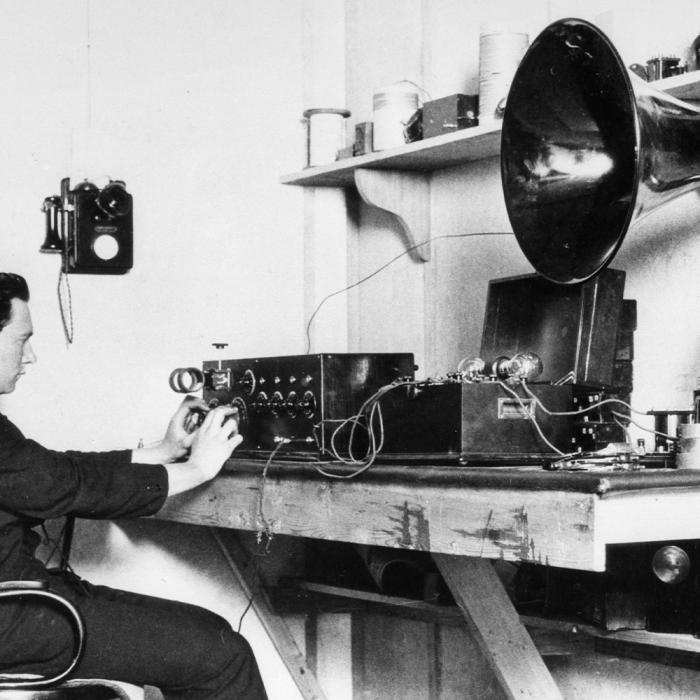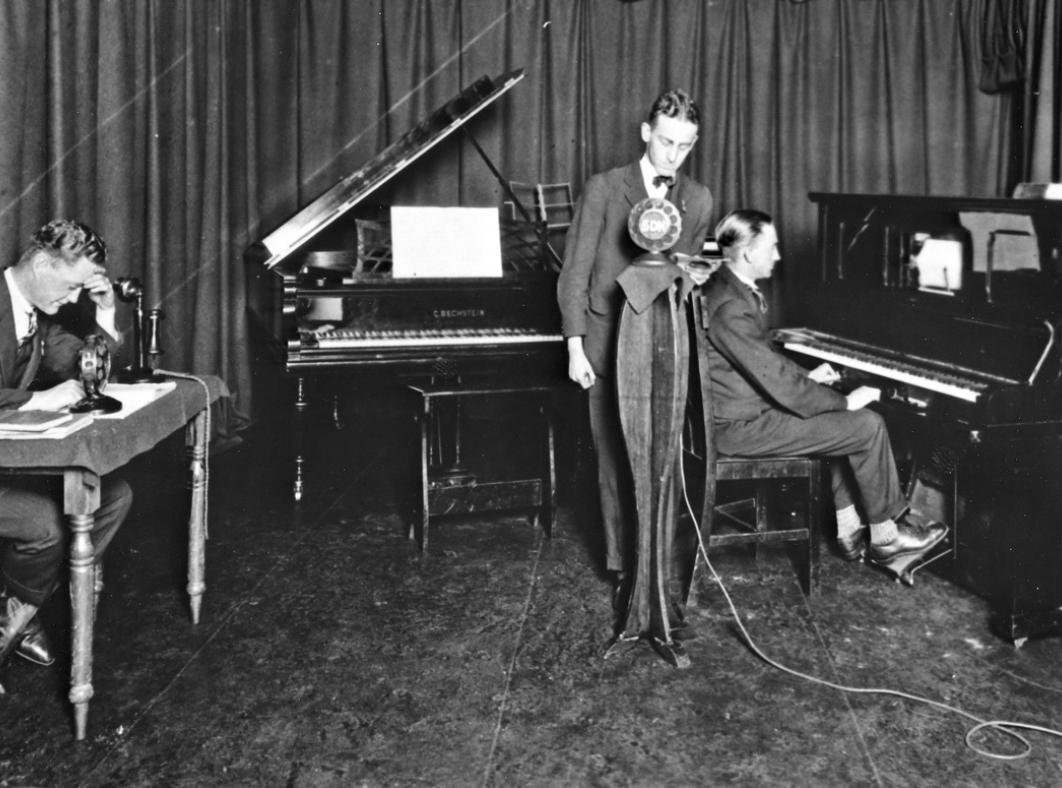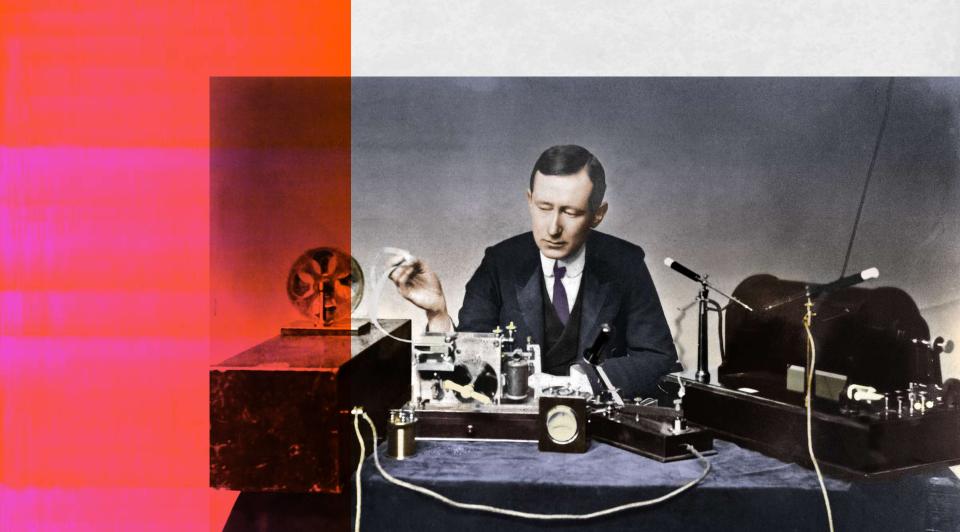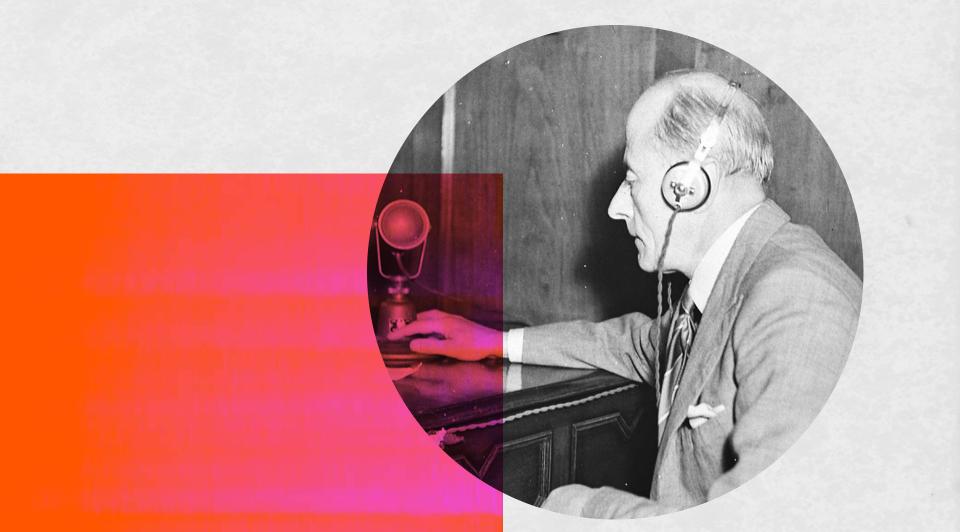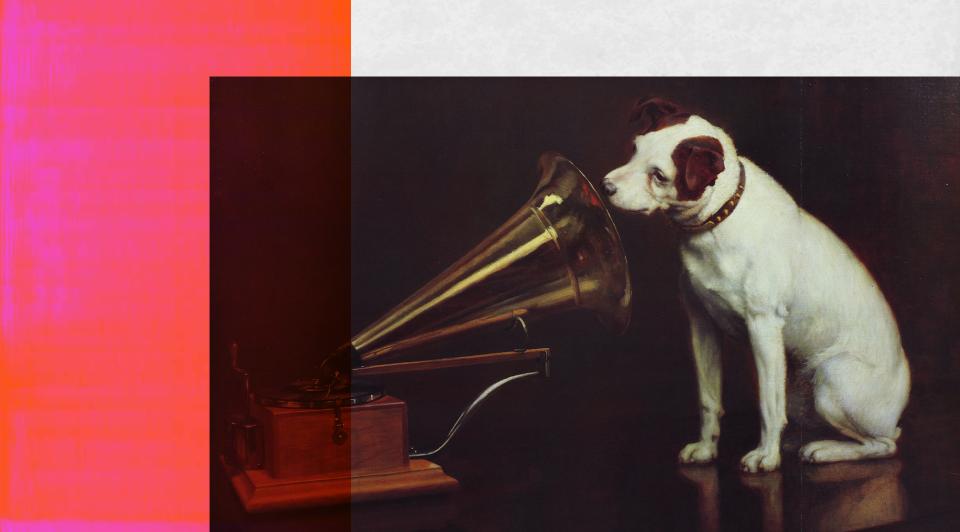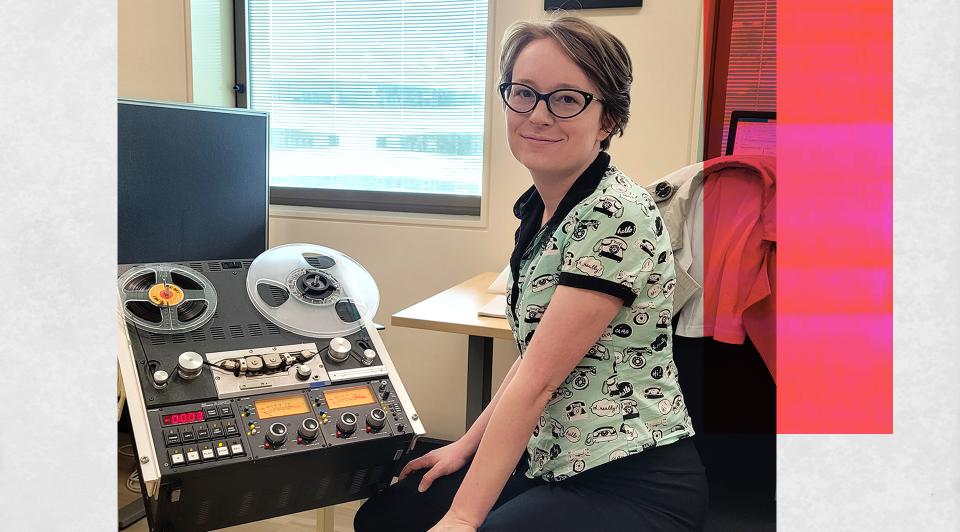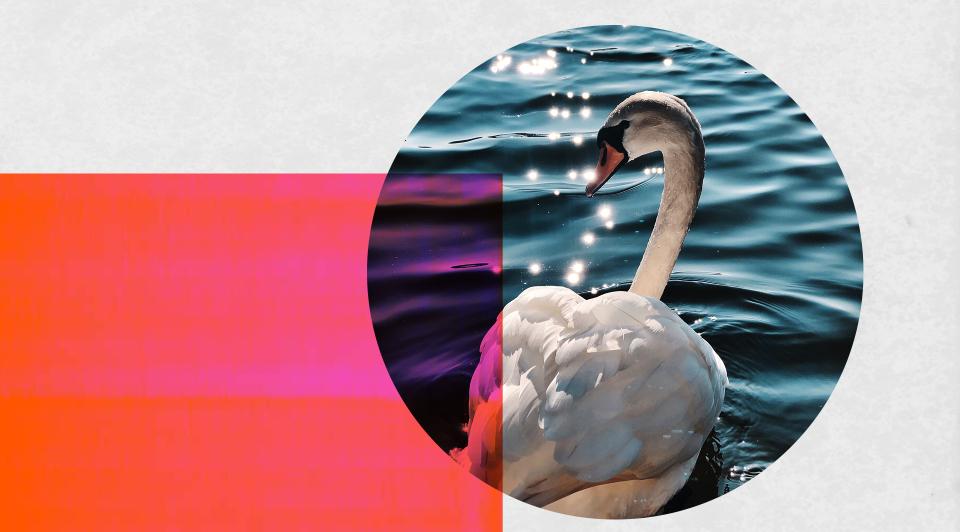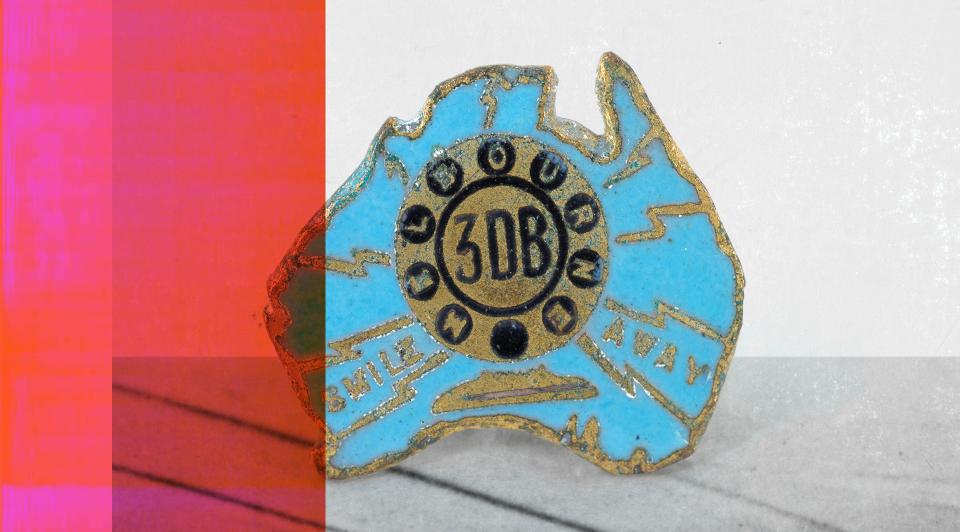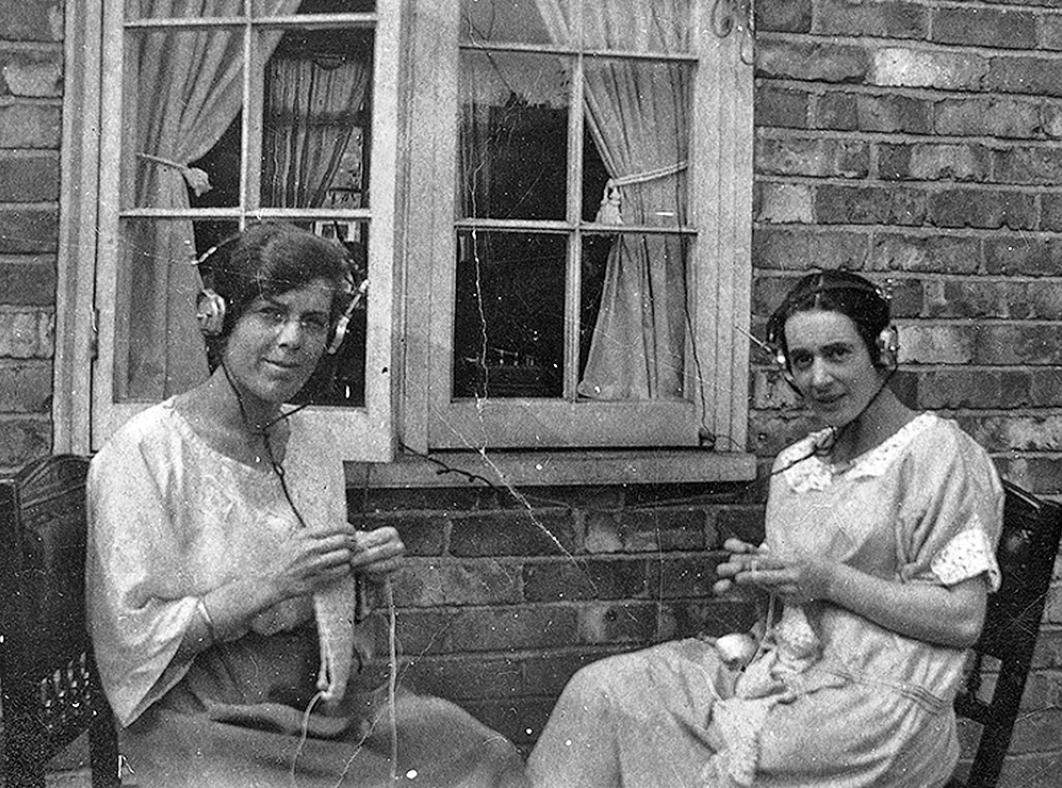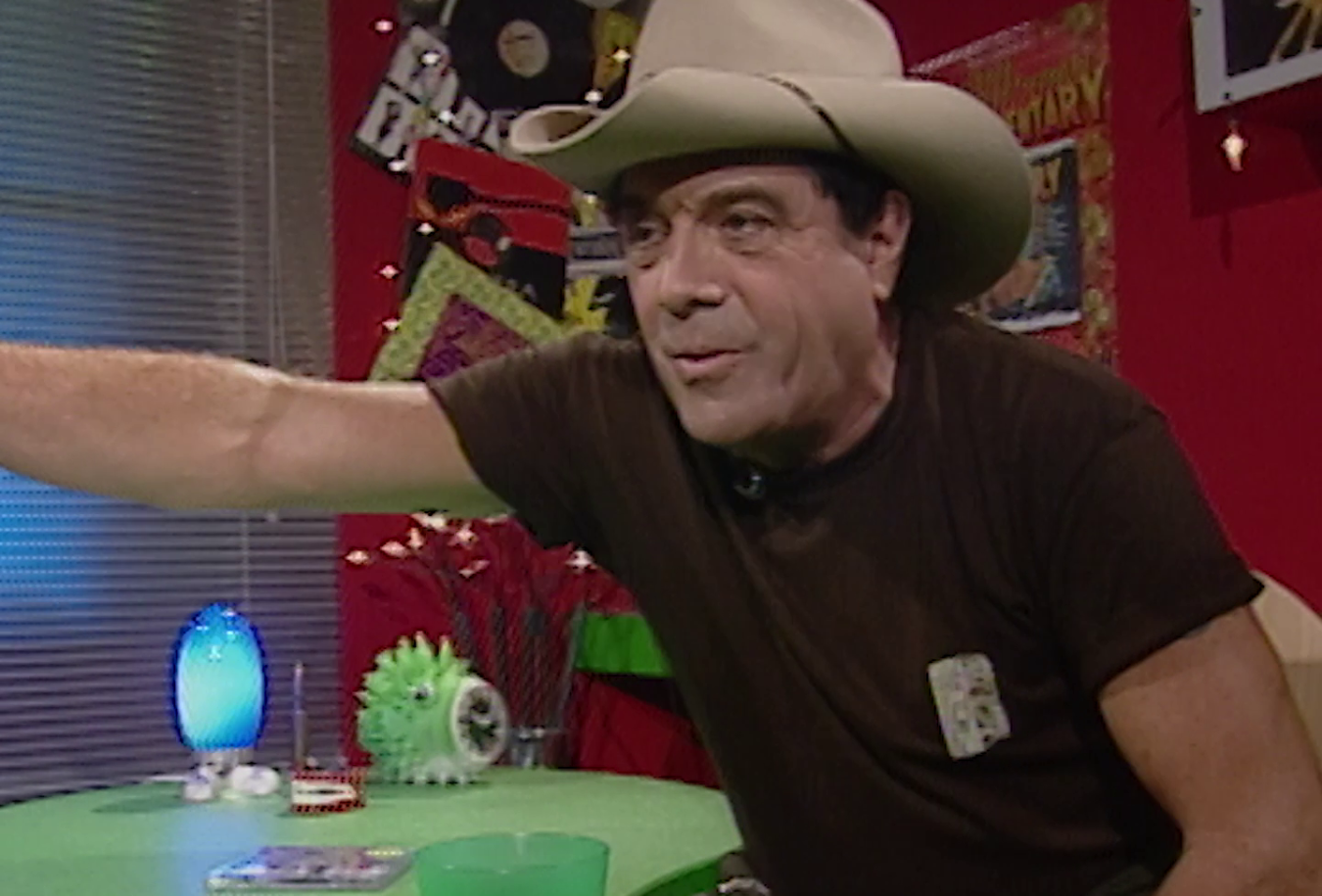
New craze, new phase NEW WAVES
Radio launches on 23 November 1923. At first, it’s a place for experimenters to tinker with crystal sets but rapidly it’s adopted into everyday life. It fits in and around our needs – for debate, entertainment and news. Some latch onto the belief it’s a portal to speak with spirits. Others see its entrepreneurial potential and plant the first seeds of a modern start-up mentality. But it’s a history we didn’t know we needed to save. Alongside the stories, only fragments remain – a dinner menu from the minds that made Australian radio; the wooden cubes of those first crystal sets; a recording of an early Aussie jingle. Together they detail the rise of the ‘great unknown force’ that made people marvel at the possibilities and grow anxious about its impact – a sentiment we would rinse and repeat for the 21st century internet revolution.
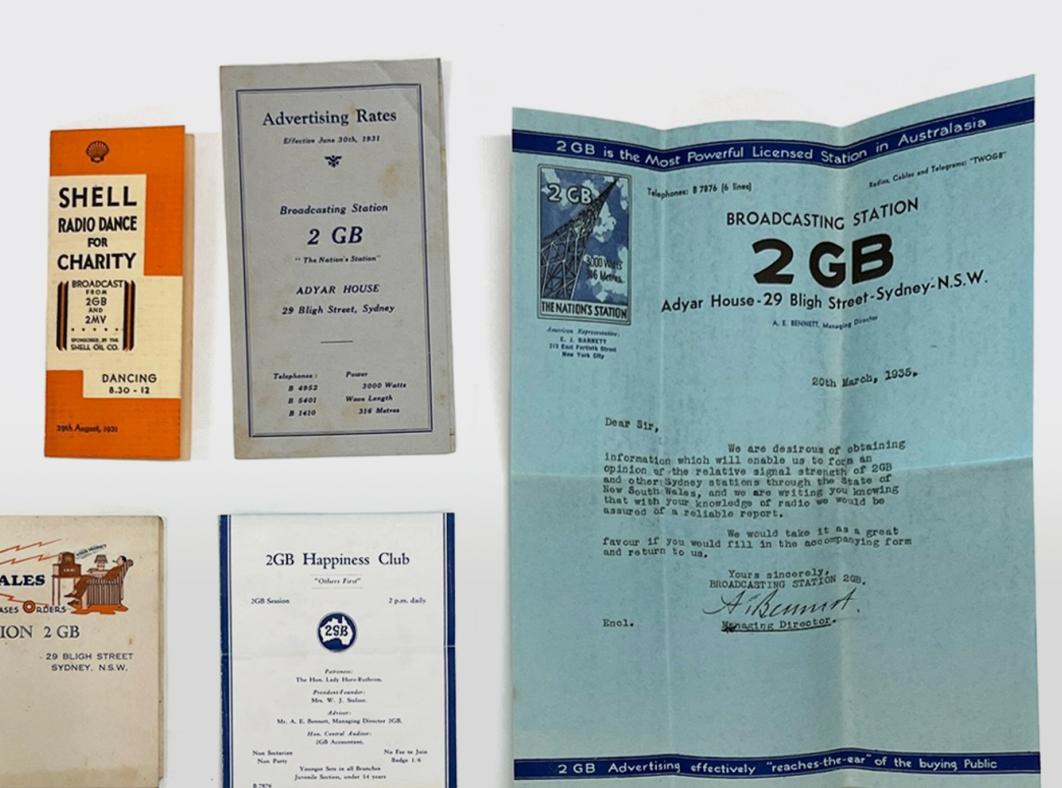
The birth of radio in Australia
A look at the early days of radio, charting its rise from crystal sets through to first broadcasts and advertisements, the emergence of commercial stations and radio personalities, and how the public’s voracious appetite for daily music, sport, news and conversation hinted at what radio would become. Read New Waves: The birth of radio in Australia in 1923.
Guglielmo Marconi. The inventor of radio. An Italian physicist, electrical engineer and Nobel Prize winner who patented the world’s first wireless telegraph.
Guglielmo Marconi. Born in 1874, Guglielmo Marconi was 22 when he was granted the world’s first patent for wireless telegraphy. Marconi harnessed this previously unknown type of radiation – radio waves – to transmit signals and in 1909 won the Nobel Prize in Physics for his contributions. He also founded the Marconi Company and employed the young engineer Ernest Fisk – the future godfather of Australian radio.
Sir Ernest Thomas Fisk. Godfather of Australian radio. Entrepreneur and wireless pioneer pivotal in the establishment of Australian radio.
Sir Ernest Thomas Fisk. Born in 1886, Ernest Fisk first travelled to Australia with the Marconi Company in 1911. He became a founding director, and later managing director and chair, of Amalgamated Wireless Australasia (AWA). Fisk arranged one of Australia’s first radio broadcasts in 1919. He was knighted in 1937. By his death in 1965, AWA had become hugely influential through both its commercial radio stations and manufacturing.
Listen to the podcast episode: Transmission Statement
Step back to the dawn of the 20th century. Radio was emerging as a marvel of maritime communication but would soon become the first form of home entertainment, reflecting and shaping Australian culture. Episode 1 of Who Listens to the Radio? revisits broadcast’s beginnings: the visionaries that propelled us forward, the early wireless that was crystal sets – and some eerie experiments along the way. Transmission Statement is radio’s inception story, where the seeds were sown for its century-long reign.
New Waves: tech inspection
Some of the earliest pieces of radio equipment and artefacts held in the NFSA collection.

Crystal sets are the simplest type of radio receiver. Named for the crystal detector, used to regulate the electrical current emitted by a radio signal, they were simple to construct, inexpensive and required no additional power supply. However, crystal sets could only receive signals within a small geographic range and listeners needed headphones to hear radio broadcasts. This model is c1908. NFSA title: 1738017

Crystal sets were the first model of radio receiver marketed to domestic consumers, their greatest popularity coinciding with the introduction of commercial broadcasting in the 1920s. Though fully assembled crystal radios were available for purchase, many were homemade, such as this example from the mid-1920s. NFSA title: 1532199
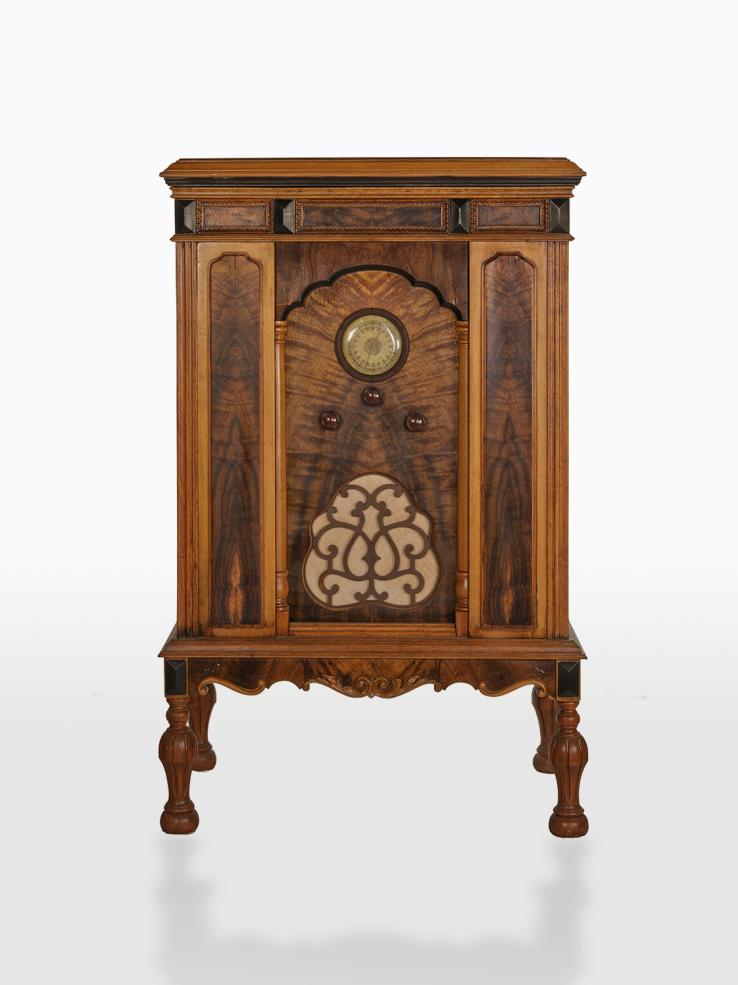
The oldest radiogram held in the NFSA collection, combining both a radio and a gramophone in one console. The Electrical Specialty Manufacturing Company marketed radios under its own name from 1933 to 1937, targeting wealthier customers with the slogan 'the aristocrat of radios’. NFSA title: 1738020
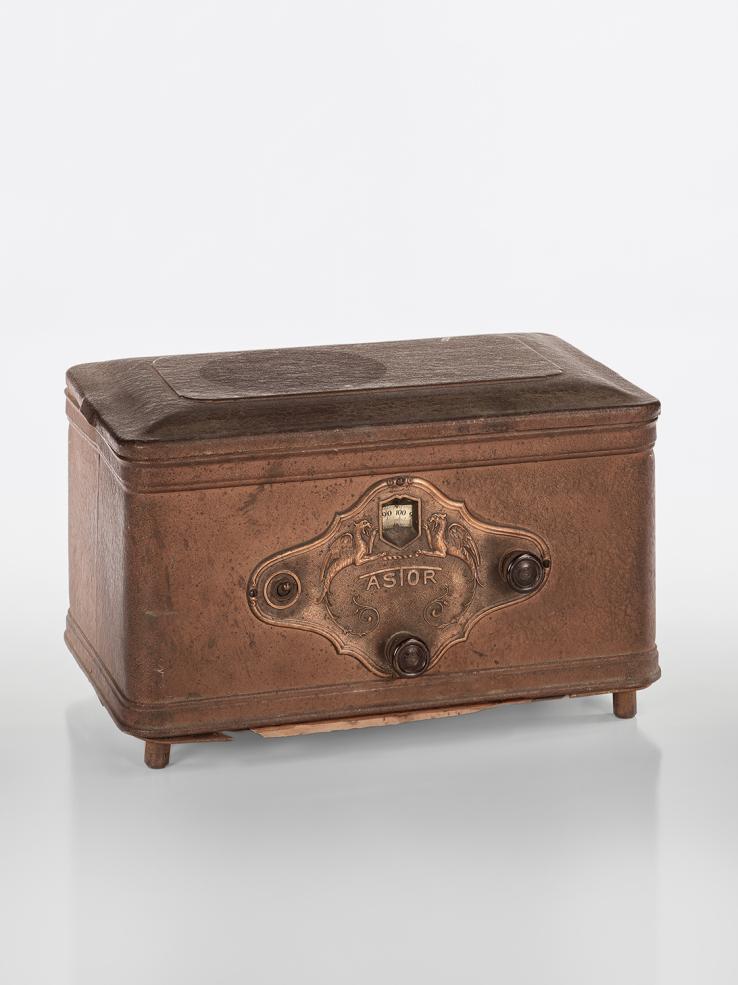
The Aladdin Electric is a tuned frequency radio receiver, first marketed by Australian manufacturer Astor in 1929. Tuned frequency radios featured multiple dials which each had to be adjusted to receive the desired signal. Radio suppliers often sold branded notebooks for listeners to record the frequencies of their local stations. NFSA title: 1738016
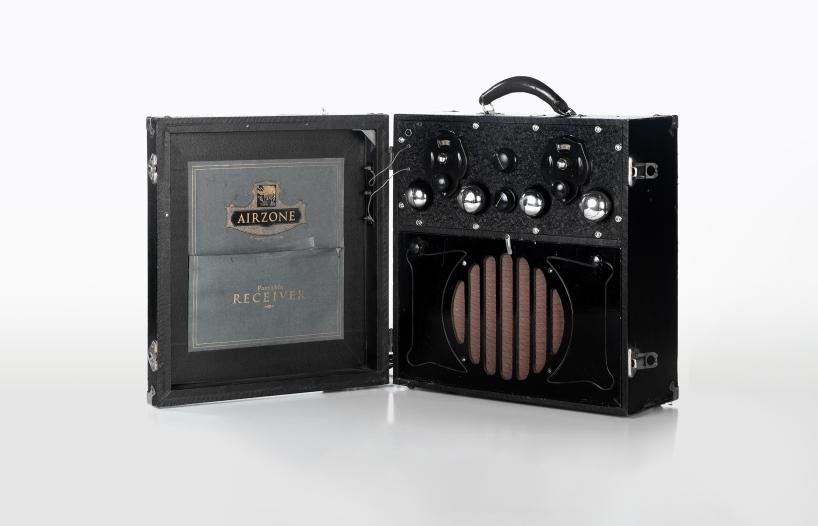
This portable radio receiver features an inbuilt speaker and is housed in a black leatherette carrying case. First released in 1928, this model was an instant bestseller for Airzone, an Australian manufacturer of radio equipment founded in 1925 and based in Camperdown, NSW. NFSA title: 1532192
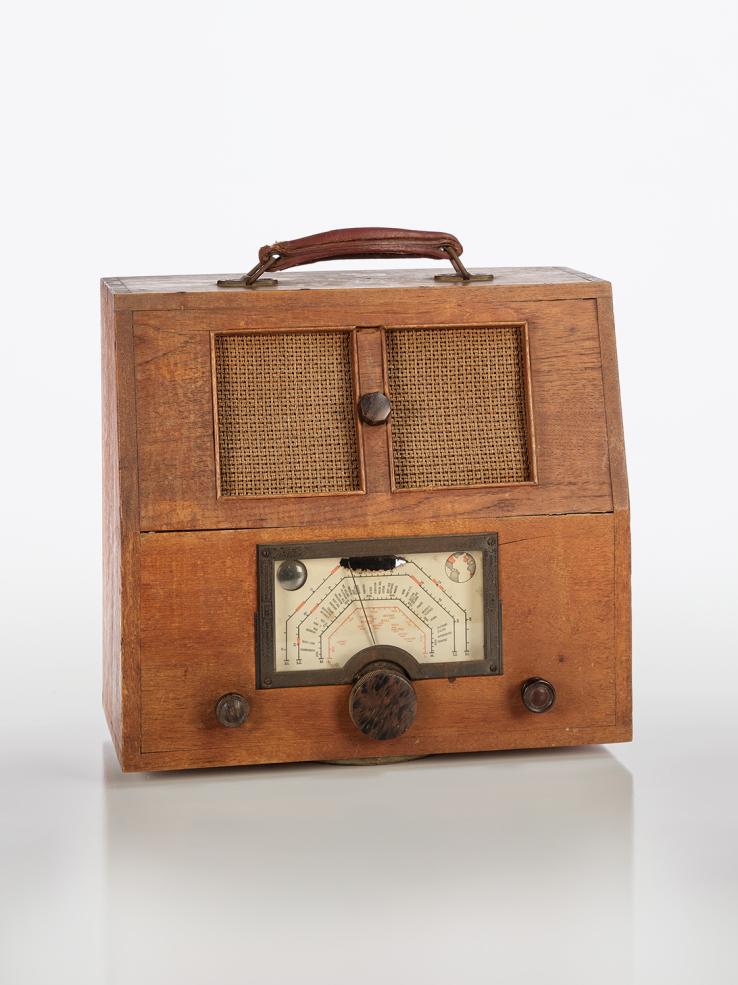
Shortwave radio, so named because its wavelength was shorter than the signal used in AM transmission, could travel far greater distances. Shortwave broadcasts could be received from across the globe, indicated by the locations listed on the dial of this homemade model, including Radio Luxembourg, Paris and Moscow. From the collection of John Bice Redmond and Irene Lucy Redmond, c1936. NFSA title: 1738022
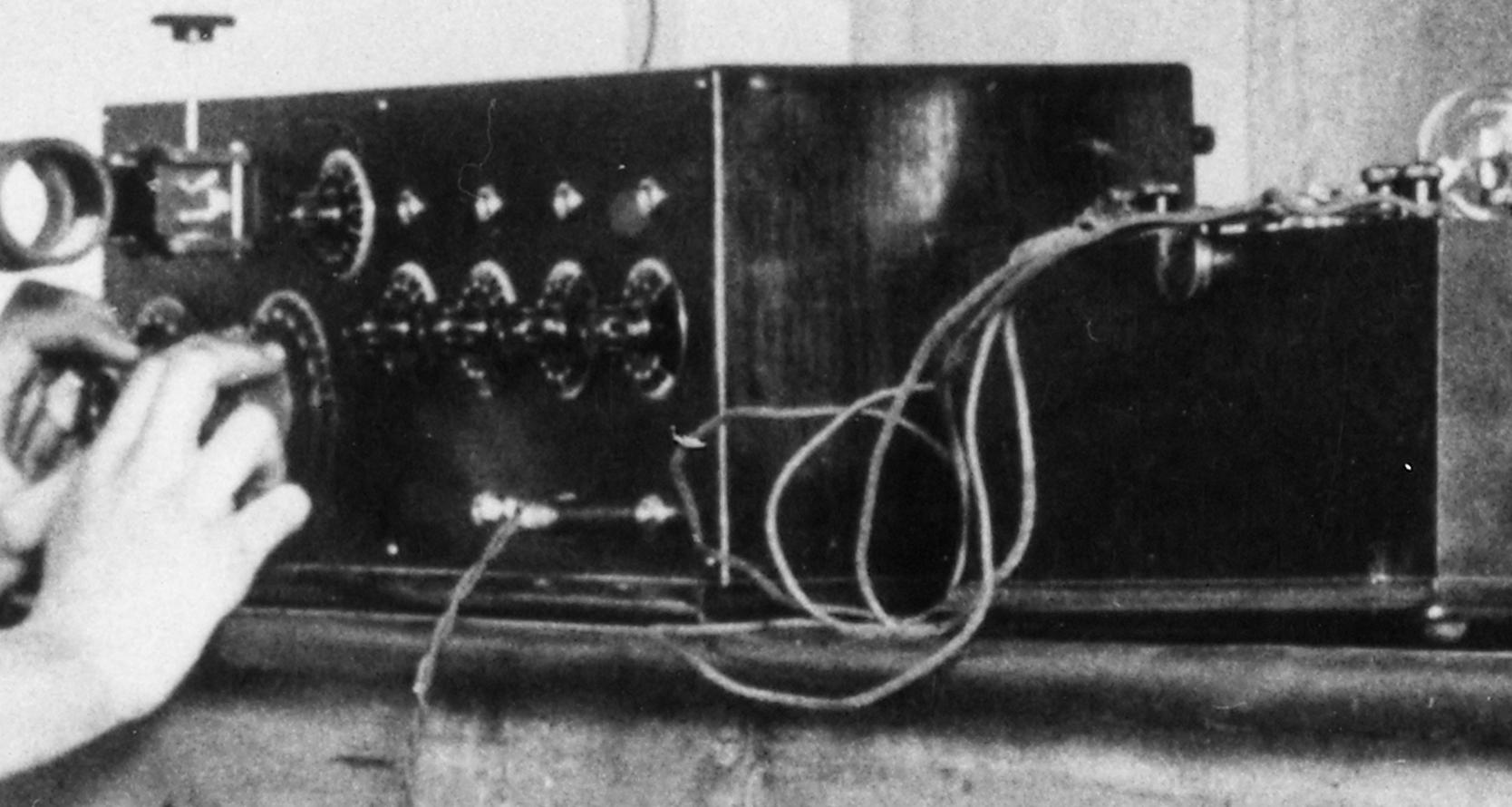
'The language of the mystical and the fantastic provided a concrete, enduring way to understand the increasing presence of mass communications in daily life.'
When radio took off in the 20th century so did the belief that the airwaves offered the chance to communicate with spirits – an anxiety that cast a shadow over radio’s inception story and still endures with new technological advancements today. Read Spirits in the Material World.
'I've enjoyed how all the items in the NFSA's collection come together, building such a richly textured picture of the period. And though much has changed since the 1920s, what struck me was all that remained the same, even 100 years later.'
Amy Butterfield shares the challenges and surprising discoveries of curating for Radio 100, including how Australia was a radio ‘vanguard’, dating the oldest radio broadcast in the NFSA collection, and – despite the gap in time – the parallels between the rise of radio and the internet as a means of human connection. Read the interview with our Chapter 1: New Waves curator.
New Waves: radio ephemera
From recordings to portraits and souvenir programs, step back in time with a selection of rare preserved radio materials from the NFSA vault.
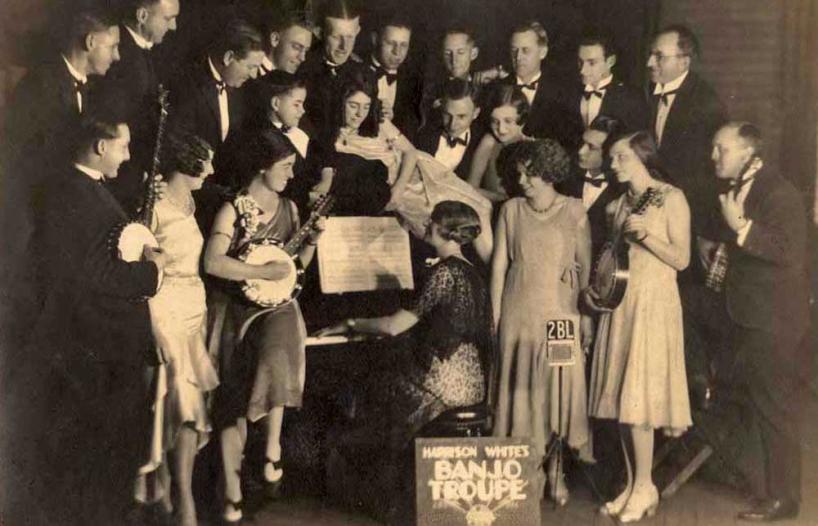
Harrison White performed regularly for Sydney broadcasters 2BL and 2FC between 1927 and 1931, both with his Banjo Troupe and as a solo artist. Initially great rivals, 2BL and 2FC were amalgamated with the other A-Class radio stations to form the Australian Broadcasting Commission in 1932. NFSA title: 449617

This pin was issued by the NSW chapter of the Fox-Hoyts Radio Club to Franklyn Barrett, manager of several Hoyts theatres in Sydney. Though membership to most radio clubs was open to all listeners, there were also radio clubs catering for specific audiences. There were clubs for women, children, moviegoers, veterans, gardeners and fans of individual programs. Even listeners working the overnight shift had the 2CA Night Owl Club. NFSA title: 766371
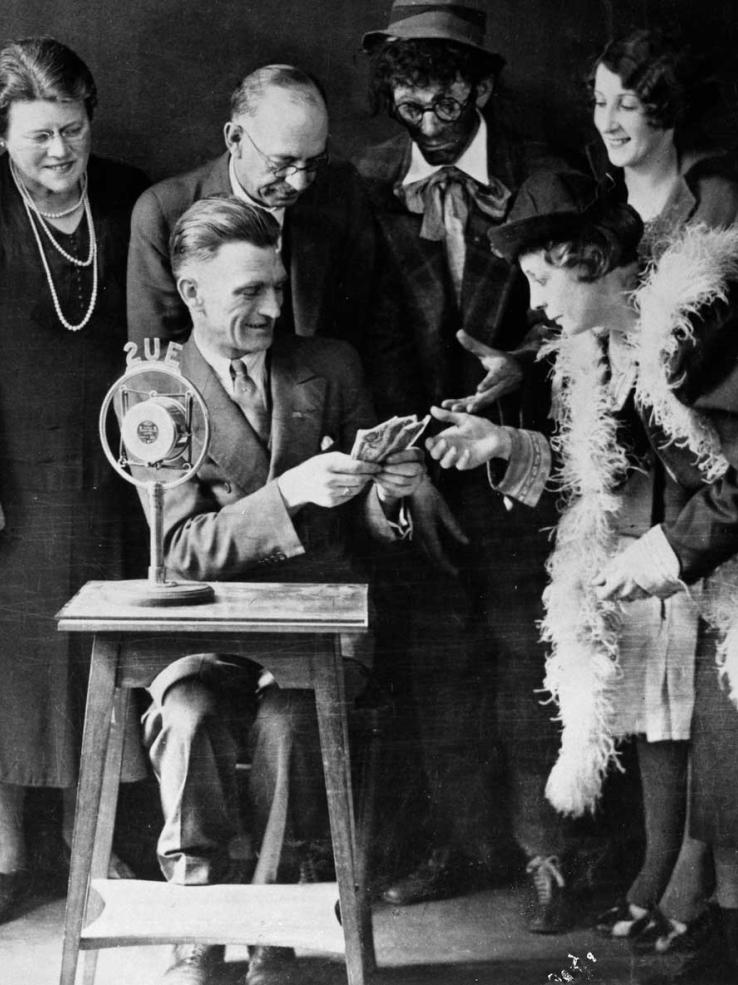
2UE was founded by CV Stevenson (pictured second from left) in 1925, who served as the station’s first announcer and chief engineer. The announcers pictured here worked at 2UE for decades, including Uncle ‘Si’ Meredith (seated) and (left to right) Willa Hokin, band leader Rex Shaw, Arthur Carr (‘Ambrose’ the Clown) and Auntie ‘Maude’ (Mrs Si Meredith). NFSA title: 1610972
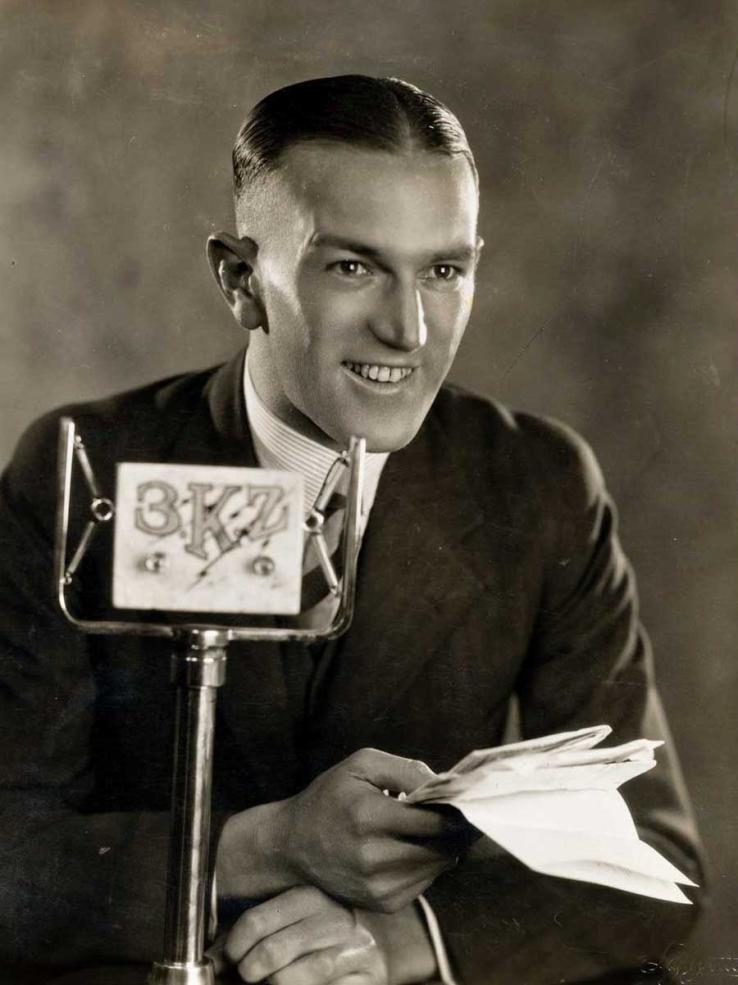
Then as now, on-air talent was key to radio stations developing and retaining the loyalty of listeners, lest they be tempted by a rival broadcaster. Norman Banks, who joined 3KZ in December 1930, was the most popular radio announcer in Melbourne, in part because he spoke like he was a friend, or kindly neighbour. Thousands might be tuning in, but for the listener at home it was if Banks was speaking directly to them. NFSA title: 1693124
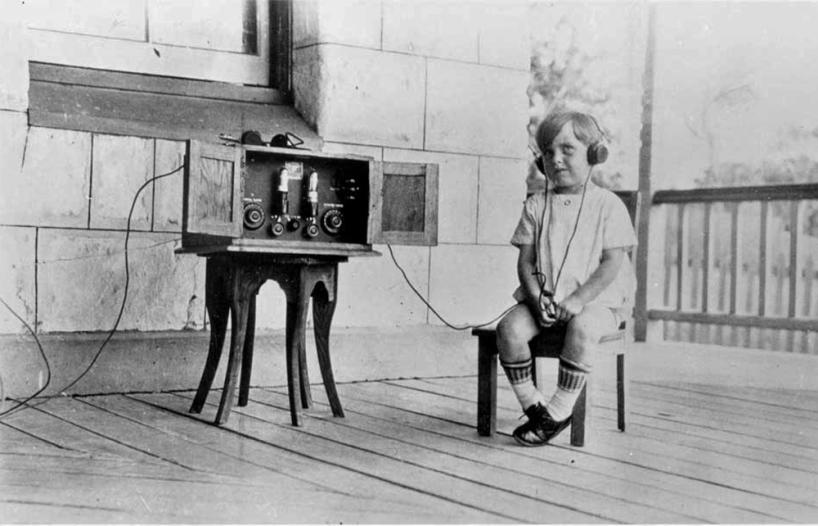
Mulgaphone was a Perth-based manufacturer of radios founded in 1924 by Westralian Farmers Ltd, owners of station 6WF. Mulgaphone radios were only sold in Western Australia, marketed particularly to listeners living in remote areas as depicted through this photo of a child listening to a broadcast from the most southern westerly point of Australia at Cape Leeuwin. Manufacturing ceased in 1929, the company unable to compete with cheaper models imported from Eastern states. NFSA title: 358852
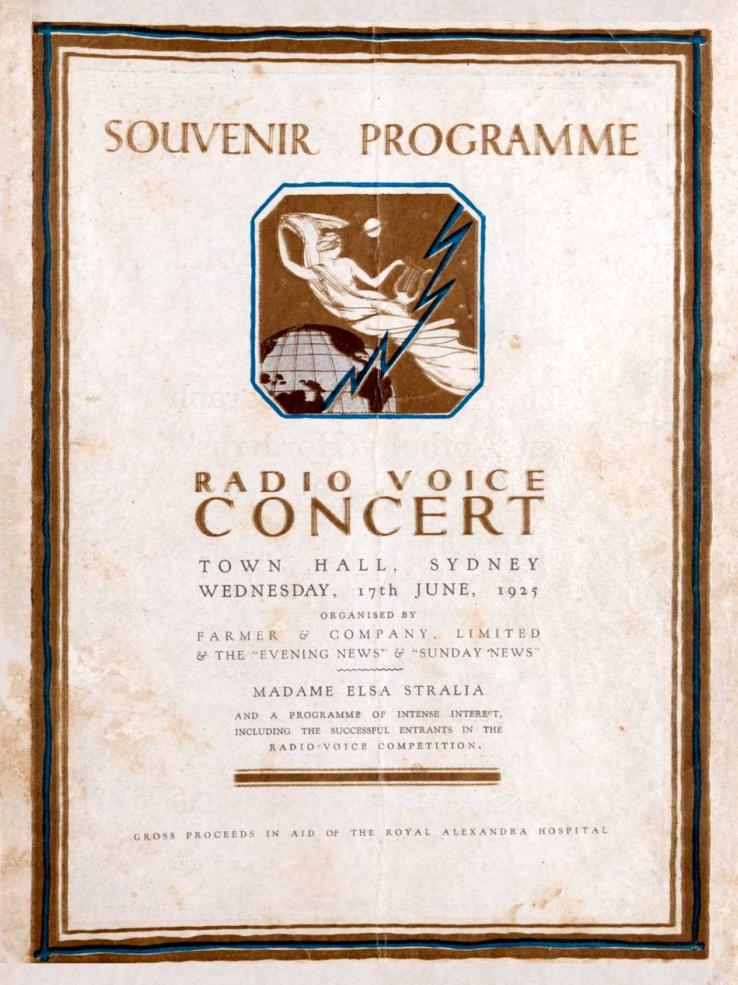
The Radio Voice Concert was broadcast from Sydney Town Hall on 17 June 1925. What makes this souvenir program historically significant is that it conveys the sheer novelty of radio in the 1920s, including articles such as ‘Wireless: Its Limitless Spheres’, ‘How Programmes are Prepared’ and ‘Should Noted Singers Be Broadcast?’ It even takes care to explain that listeners cannot expect to enjoy every program broadcast, with different programs appealing to different audiences. NFSA title: 438750

Music to our ears: in 1923 Australians heard a song on the radio for the first time. That song? ‘Le Cygne’ from Saint-Saëns’ The Carnival of the Animals.
At 8 o’clock on the evening of Friday 23 November 1923, people gathered across Sydney to tune into 2SB. Whether they had crystal sets and earphones or radio sets with large speakers, they tinkered with knobs, wires or aerials for the best possible reception as broadcasting in Australia officially began with St Andrew’s Choir performing ‘Le Cygne’ (‘The Swan’) from Camille Saint-Saëns’ The Carnival of the Animals.
Stay tuned! To stop listeners changing stations, pre-recorded musical radio promotions called jingles were created, such as the popular theme song for 3DB’s Smile Away Club.
Most early radio advertisements were read out live on air, but an exception was pre-recorded jingles. In 1930, 3DB commissioned Charlie Vaude to create the Smile Away Club theme. It was a success: by the end of the decade, the club had 50,000 members. Another notable jingle was Trueform Shoes. Set to ‘The Blue Danube’, it’s an early example of matching advertising copy to popular music.
Nine essential moments in early radio
The early years of radio were an exciting but tumultuous time – against the backdrop of The Great Depression and war, Australians were pioneers in this new electronic technology for the home. These excerpts from Professor Bridget Griffen-Foley’s interview for the new podcast ‘Who Listens to the Radio?’ outline nine essential moments from the inception years of 1923 to 1935.
The National Film and Sound Archive of Australia acknowledges Australia’s Aboriginal and Torres Strait Islander peoples as the Traditional Custodians of the land on which we work and live and gives respect to their Elders both past and present.
